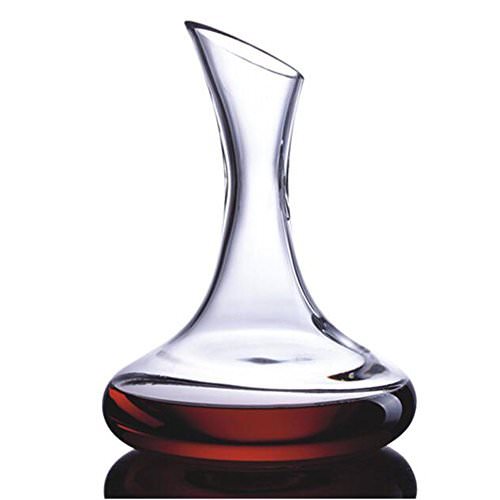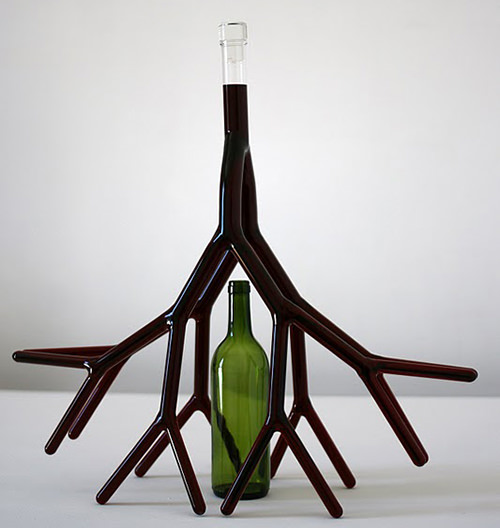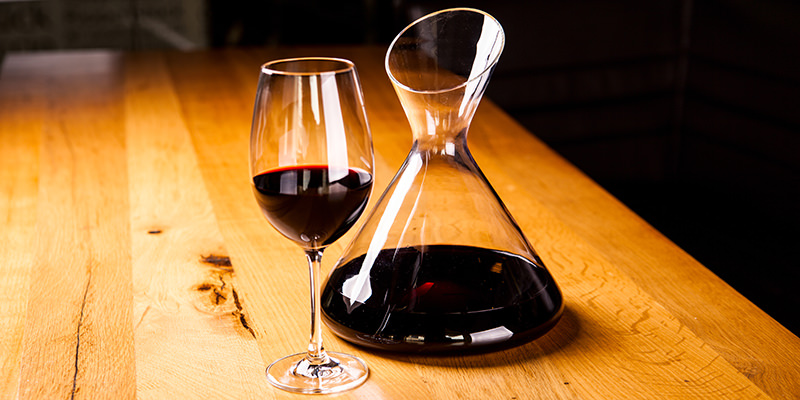To decant, or not to decant? We’ve kind of solved that one already. The answer is both. There are circumstances in which decanting might really help tease out the character of the wine, as with an older wine that needs a little nudge from oxygen. Other times, especially with younger wines, decanting is more for presentation than anything else, or to show Uncle Pete you’re absolutely using the awkwardly shaped wedding gift he got you. And that’s just fine, too.
So we’re pretty much wrapped up here, right? Sort of. We would be if decanters weren’t so varied in shape and price. Does the shape of your decanter actually make a difference in the taste of the wine?
Why We Use Wine Decanters
The original purpose of decanting, which included the use of a candle to see inside the upper neck of the bottle, was to make sure all sediment was removed from the wine. This was a much more necessary practice back in the day, when wine filtration technologies weren’t where they are today. Not that decanting doesn’t have its rationale at your dinner table. Today’s decanting mostly serves the purpose of aeration: subjecting the wine to a certain—controlled—contact with oxygen.
And while oxygen can be a total jerk to wine if left to its own devices—oxidizing it to the point of brown, even bitter flatness—the right amount of oxygen can bring a wine to its fullest expression.
Which is why the shape of the decanter can matter, though only to a certain extent. The size of the opening will obviously determine how much air, and therefore oxygen, is going to reach your wine. But that isn’t the only measurement that matters. The size of the decanter bowl itself—the bottom part where the wine sits while your guests stare at it thirstily, checking their watches—will determine the amount of available surface area. The more surface area, the more contact between wine and oxygen and the less time you’ll need to decant.

A basic decanter like this one will do you just fine (especially for $25). There’s a large enough opening for air to come in, a moderate amount of surface area, and even a punt (that little nub in the bottom of your wine bottle) for easier handling. If you want a little more presentation and a wider bowl, something like this isn’t any more expensive. If you’d like some pizazz with your decanting, this Twist Decanter treads some middle ground (the “twist” theoretically encourages greater aeration during pouring). Among affordable decanters, the principles remain the same: surface area at opening, surface area in the bowl. And unless you recently pissed someone off, or you’ve got some cash to burn, affordable decanters are really all you need.
Enter The Oddly Shaped Wine Decanter
The reason decanter prices can go way up has nothing to do with functionality. You could decant in a mason jar, several coffee mugs, or, yes, the old blender trick. Decanter prices go up either with special design or material, as in this lead crystal “Duck Decanter” from Riedel, which costs more than ten times as much as the Twist Decanter. Unlike some pricier decanters, this one doesn’t neglect function for design; the moderate opening and the wide bowl allow for easy pour and a fairly large surface area. And the name, of course, will encourage your mildly intoxicated guests to quack. Can’t argue with that.

Of course, some decanters are entirely about design, in which the shape only matters for the shape. The opening in this branched decanter from Etienne Meneau is incredibly small, and there’s only one spot where air will have any contact with a proportionately much larger amount of wine. With the wine bottle under it, you can see how this decanter gives your wine about as much contact with oxygen as an uncorked bottle of wine. But that isn’t the point; according to Meneau, his “Strange Carafe” line is meant to “demonstrate ‘how wine becomes modern,'” not how wine becomes well oxygenated.
So yes, decanter shapes can have a certain impact on your wine, though in very small increments. You really don’t have to decant most wines for more than 30 minutes, so we’d recommend you go with your design preference, and checking account balance, on this one.

